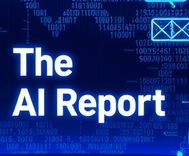Palantir’s tools pose an invisible danger we are just beginning to comprehend

The AI Report
Daily AI, ML, LLM and agents news
Are we truly free when invisible digital architectures, powered by sophisticated artificial intelligence, quietly shape our lives, determine our movements, and even decide our fate? This isn't a dystopian fantasy; it's the stark reality emerging from the proliferation of advanced surveillance and targeting systems, wielded by entities from federal agencies to private corporations. Understanding these tools, and their profound impact on human rights and personal autonomy, is no longer optional—it's essential for safeguarding our future.
Unmasking the "AI Kill Chains": What Are Istar Systems?
At the heart of this challenge are what technologists call Intelligence, Surveillance, Target Acquisition, and Reconnaissance (Istar) systems. Often referred to chillingly as "AI kill chains," these platforms are designed to track, identify, and categorize individuals at scale. Companies like Palantir Technologies have pioneered and widely distributed these tools, which combine vast datasets to detect patterns and deliver "targets" to operators for actions ranging from detention to lethal force.
How They Operate: A Four-Layer Architecture
These sophisticated systems, whether used by law enforcement for immigration enforcement or by military forces in conflict zones, share a common architecture:
- Data Integration: They ingest immense amounts of information, both publicly and privately sourced. This can include highly personal details like biometric and medical records, social media interactions with friends and family, precise location data from license plate readers, SIM card records, and surveillance drone feeds. Data brokers also fuel this ecosystem, selling personal information that further enriches these profiles.
- Data Interpretation & Modeling: Advanced analytics and machine learning algorithms process this data, identifying patterns and constructing predictive models about individuals or groups.
- Automated Actions: Based on these models, the systems can then recommend or even execute automated actions, with varying degrees of human oversight.
Each layer of this architecture raises critical ethical questions concerning civil rights, data quality, algorithmic bias, discrimination, accuracy, and, most importantly, accountability.
The Invisible Threat to Our Civil Liberties
The insidious danger of these Istar systems lies in their near-invisible nature. Most individuals are unaware of how their daily actions—driving a car, scrolling social media, or even attending a public gathering—feed vast surveillance programs. This lack of transparency allows these tools to influence lives without public scrutiny, leading to profound violations of fundamental rights.
Eroding Fundamental Freedoms
Consider the erosion of civil liberties: these systems create extensive, unseen surveillance networks that can chillingly limit what people feel comfortable sharing publicly, whom they meet, or where they travel. They effectively enable warrantless searches and seizures of personal data without individual knowledge or consent, directly challenging First and Fourth Amendment protections. For vulnerable populations—political dissidents, migrants, or residents in conflict zones—the consequences are often dire, leading to wrongful detention, forced migration, or even targeted attacks.
From Immigration Raids to War Zones: Real-World Impacts
The impact of these weaponized AI platforms is tangible and global. In the United States, agencies like Immigration and Customs Enforcement (ICE) leverage Palantir's "Investigative Case Management" (ICM) and "ImmigrationOS" platforms for "complete target analysis of known populations," bolstering mass deportation efforts. This means an unseen digital dragnet can coordinate the tracking, arrest, and removal of individuals from the country, affecting entire communities.
Globally, the reach extends further. Palantir provides critical data infrastructure for war-related missions, including those carried out by the Israeli Defense Forces (IDF) in Gaza. Here, Istar tools like "Where's Daddy" reportedly track targets to their family homes, facilitating lethal strikes. Such applications highlight a terrifying evolution in warfare and surveillance.
Moreover, the integration of AI targeting is not confined to government and military use. As these technologies become normalized, the private sector increasingly adopts similar platforms to build data "dragnets" for customer targeting, behavioral shaping, and revenue maximization—extending systems of control into our commercial lives.
Reclaiming Privacy: A Call to Action
The struggle for civil rights in the face of advanced AI is a pressing concern. Across the country, activists and concerned citizens are mobilizing. Efforts are underway to protect and strengthen AI consumer protection laws, such as the proposed AI Sunshine Bill in Colorado, which aim to safeguard residents from algorithmic discrimination. These grassroots movements emphasize that the fight for privacy is not just for the vulnerable, but for everyone.
It's imperative that we, as individuals and as a society, embrace the cause of privacy. We must demand transparency and accountability from both the creators and users of these powerful technologies. This involves understanding how our data is used, advocating for robust legal protections, and actively protesting against the unbridled proliferation of targeting tools in our public and commercial spheres.
The path forward requires vigilance, education, and collective action. Policymakers, technologists, and every citizen must recognize the invisible dangers lurking in our digital landscape and work together to ensure that technology serves humanity, rather than becoming a weapon against it. Our autonomy and fundamental human rights depend on it.

The AI Report
Author bio: Daily AI, ML, LLM and agents news
